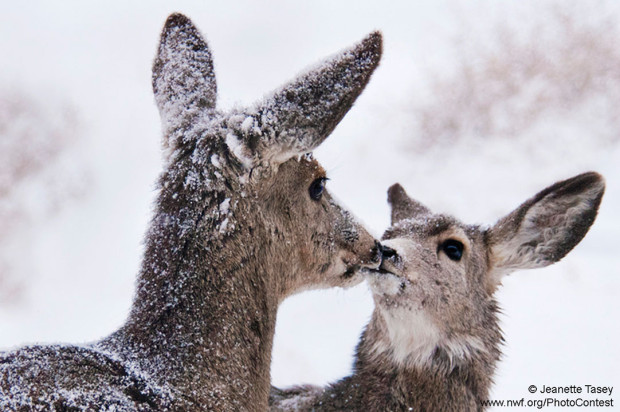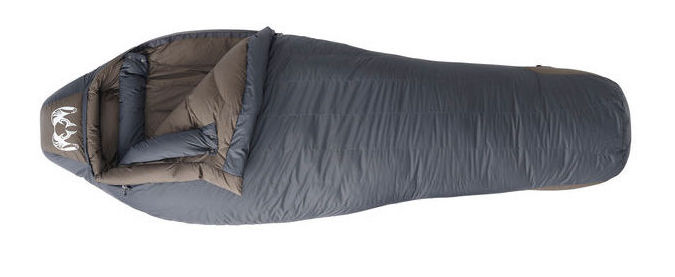Earlier this week, the Bangor Daily News shared footage of a nimble deer floating down a Maine river on an ice sheet. It was the stuff of legends. Specifically, it was the stuff of two legends: Rudolph and Yukon Cornelius.
The Allagash and St. John rivers, after a 5-month freeze, finally began to move. For local residents, this moment is worth being on hand for and many come out to watch as spectators. This is not uncommon. What was, however, uncommon was the plight of this single deer.
One resident watched the deer float for at least two miles before packing it in and heading home. The story lacked an ending. Did the deer survive? Indeed it did. Another resident on the river’s shoreline father down, captured the deer edging near the riverbank on its ice sheet, close, closer still, until it stepped off, safe and without incident.
While the story itself reminds us of a deer’s incredible agility, it also prompts questions of curiosity about a deer's cold endurance and will to survive.
Q.
Had the deer fallen off and managed to swim the rapidly moving water and dodge the ice, could it have survived or would hypothermia overcome the animal?
A.
We know deer, like humans, will eventually succumb to hypothermia. But deer can handle far cooler water temperatures before this is a concern. Scott Rando, an outdoor writer from Narrowsburg, New York, has watch a deer cross a body of water that was a few degrees above freezing. The river was mostly rapids and eddies. But the deer crossed without issue.

Each hair on a deer’s winter coat is hollow, so air is trapped inside and helps the animals retain heat.
“Deer are better swimmers than we give them credit for and can handle cold water well,” he wrote in an issue of The River Reporter.”In the two minutes or so that this deer took to cross the river, an unprotected human would be in great peril of succumbing to hypothermia. When ice doesn’t cover the river or another body of water, deer will not hesitate to swim in order to get to the other bank.”
In the case of the headline-making, Maine deer, it’s clear the river was covered in ice sheets and fragments eliminating any chance of a successful swim. But it’s not clear if the deer could have survived the river’s cold temperatures. It may well have not been hindered by the cold.
Longtime outdoor writer, avid hunter and Waupaca, Wisconsin native Patrick Durkin put it this way, “Eventually hypothermia would get them if they fell into freezing water, like a hole in the ice, but man, I’ve seen them swim creeks and rivers that had to be in the 30s. Typically it’s not far, so they just get out, shake off and keep going … kind of like a Labrador.”
Q.
Once out of freezing water or near-freezing water, what traits give deer the ability to shake off and keep going despite the frigid climate?
A.
A deer’s winter coat keeps these animals warm even when it’s -30 degrees Fahrenheit. Consider that for a minute. Hunting apparel and outdoor-gear company Kuiu's warmest sleeping bag protects backcountry hunters in cold temps as low as zero degrees, making a deer's winter coat far more protective than one of today's most technologically advanced sleeping bags.

A deer's winter coat can withstand temperatures 30 degrees colder than Kuiu’s warmest bag.
Each hair on a deer’s winter coat is hollow, so air is trapped inside, which helps the animals retain heat. Utilizing air pockets for warmth is mimicked in cold-weather apparel, quilts and window panes.
Q.
In colder climates, where water is frozen for months at a time, how do deer drink and satisfy their basic daily requirement for water?
A.
Deer can satisfy their water needs one of three ways: by drinking free water, through preformed water — which is available in the foods they eat — and through the digestion process, where metabolic water is released from food. It’s also helpful that deer need water most in the spring and summer. This works out well since fresh water is often frozen in colder, winter climates, combined with a selection of winter foods that are drier and less succulent.
Deer in northern ranges often satisfy their thirst by browsing on the green needles of coniferous trees like hemlock and white cedar.
Bonus fact: According to the Quality Deer Management Association, northern deer have the unique ability to recycle their urine and dry their feces internally to conserve water during winter. Super cool superpower, right?
Q.
Finally, about Yukon Cornelius: If, like me, upon seeing the image of the Maine deer on the sheet of ice did make your mind go immediately to that heroic day when Yukon Cornelius and Rudolph sailed away on a sheet of ice, perhaps you also revisited a common, burdensome question: why does Yukon lick his pickaxe in that scene?
A.
Well, he wasn’t mining for silver and gold, he was mining for peppermint! Which would have been evident if not for a critical scene in the original movie that was cut. Thus the licking! You can read more and see the movie clip that was cut here.






